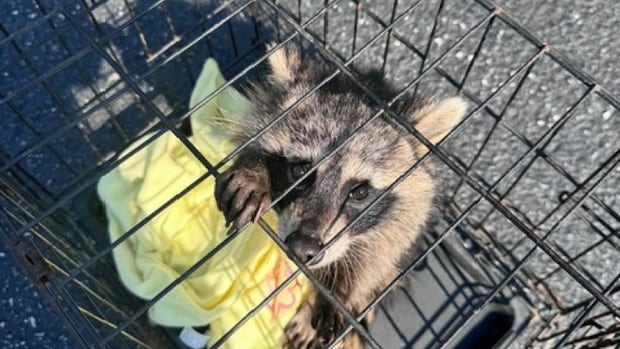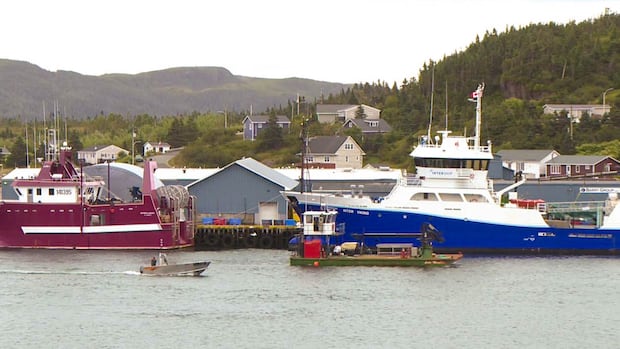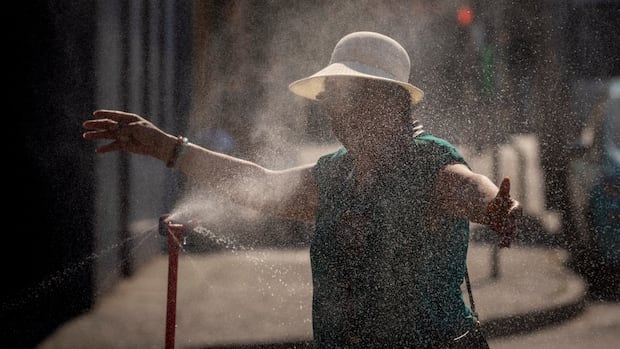As It Happens6:30Newly discovered sea spiders use bacteria on their bodies to turn methane into food
Most people probably don’t think of sea spiders as cute, but biologist Shana Goffredi says they’re “extremely adorable.”
Goffredi and her students have discovered three new species of sea spiders, from the genus Sericosura, that live exclusively near methane seeps and hydrothermal vents on the ocean floor.
The creatures have endearing facial features, like a big nose and tiny teeth, that make them stand out, Goffredi says. But what really makes them special, she says, is their ability to grow “monocultures” of bacteria that turn methane, a greenhouse gas, into tasty nutrients.
“They are the ultimate farmers,” Goffredi, a professor and chair of biology at Occidental College in Los Angeles, told As It Happens host Nil Köksal.
What they’re farming, she says, are the bacteria that live on their bodies. Those bacteria convert methane gas that bubbles up from the sea floor into carbon-based nutrient sources that the spiders absorb when they eat the bacteria.
Researchers say the findings, published in the Proceedings of the National Academy of Sciences, shed light on how life sustains itself in the ocean’s depths, and could even help us develop tools to mitigate the effects of climate change.
Passing through generations
Some arthropods, like some crabs, farm their own microbes, and scientists have found a similar symbiosis between worms and bacteria living near methane seeps.
But this discovery marks the first time scientists have observed this particular phenomenon in sea spiders.
Most sea spiders are hunters. They tend to eat anemones, worms, sponges and soft corals, getting their nutrients by piercing their prey and sucking up their internal fluids.
The Sericosura spiders, on the other hand, are more like intergenerational farmers.
After a female spider lays eggs, the male spider carries them around in special egg cases on their bodies until they hatch. The father then transfers his microbes to the hatchlings, which makes the farming process possible.
“He gives them the symbionts that will grow on their exoskeleton that they will farm for the rest of their life,” Goffredi said. “They’re really good dads.”
A ‘happy accident’
What’s not yet clear is what the bacteria get out of this arrangement.
Goffredi says more research is needed to determine why bacteria are attracted to the translucent, centimetre-long sea spiders, and what makes their bodies a suitable habitat.
“We’re already looking for animals that might have been often overlooked in the past, that might actually have a big role in being the link between gaseous, high-energy methane and the microbes that use it,” she said.
This discovery, she says, was “a happy accident,” as she and her team had initially just set out to study methane seeps.
Guadalupe Bribiesca-Contreras, a post-doctoral researcher at the Natural History Museum in the U.K. who studies deepsea systematics and ecology, says phenomena like methane seeps are poorly understood because they’re isolated environments, making them difficult to study.
“We’re at a stage where we’re just starting to provide very basic information, [like] what lives there,” Bribiesca-Contreras, who was not involved in the study, said. “Then we can start looking at these bigger, more relevant questions.”
One of the questions Bribiesca-Contreras is interested in is how creatures that live in environments like methane sinks evolved.
Cimate change and conservation
Methane may provide a nutritious snack for the bacteria and the spiders, but it’s also a greenhouse gas that contributes to climate change.
Goffredi says the discovery her team made shifts understanding of how methane cycles through the ecosystem, and she hopes that by better understanding the spiders’ process, humans can develop technology that mitigates methane release from the ocean.
In fact, some scientists are already testing the use of methane-eating bacteria to reduce methane emissions in landfills.
“I think we could learn a lot from these spiders,” Goffredi said.
Methane is the second-most abundant greenhouse gas contributing to global warming after carbon dioxide.
According to the United Nations Environment Program, around 30 per cent of contemporary global warming is driven by methane released by human actions.
Nicole Dubilier, who studies symbiotic relationships at the Max Planck Institute for Marine Microbiology in Germany, says the spider discovery is interesting, but she’s skeptical that it will lead to reducing methane emissions.
“I don’t know if that one species is going to make such a difference,” said Dubilier, who was not involved in the research. “That’s not the point of this discovery.”
That’s because it’s extremely difficult to culture bacteria from the environment, she said, especially when they’re in mutualistic symbiotic relationships or haven’t been cultured before.
A group of leading ocean and climate scientists, including Canadians, is calling for a ban on deep-sea mining just as U.S. President Donald Trump moves to fast-track undersea mining approvals.
The real value of the discovery, she says, is that it sheds light on how creatures survive in deep, dark, nutrient-poor environments.
That’s especially important as countries have expressed an interest in ramping up deepsea mining efforts, she said.
“It does matter for conservation of these special sites,” Dubilier said. “You can’t start destroying an environment before you understand it.”
Bribiesca-Contreras agrees.
“It’s important that we understand how the ecosystem functions and what services those ecosystems are providing,” she said. “Because maybe if we damage them, there’ll be an impact on our lives.”








